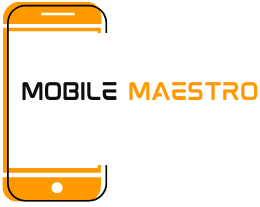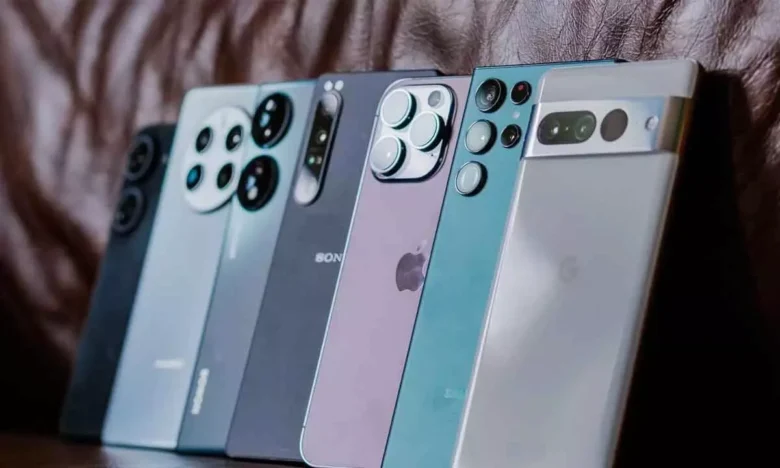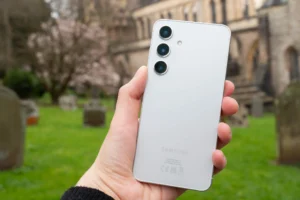Smartphone cameras will become even more capable of taking pictures, as camera sensors and telephoto lens technology continue to improve. New displays will be more energy-efficient, while touch screens with pressure-sensitive controls will allow for better precision.
Recent years have seen the rise of foldable phones, such as Motorola’s foldable smartphone that celebrates nostalgia through flip phone animations with a time-travel option. Most of these smartphones offer four years’ worth of OS updates and five years’ worth of security updates.
1. Sony Xperia 1 VI
Sony produces some of the best mirrorless cameras, screens and Android smartphones. However, its own smartphones are not very impressive. The Xperia 1 VI aims to change this, but at first glance, it does not appear that much has changed. Its ridged and textured frame still mimic a grip for a camera (although, when you run your fingernail over it, the Xperia 1 VI still squeaks), while its three rear cameras are still elongated, though slimmer, than their predecessors’ modules.
The main difference with the Xperia VI, is its display panel. This change may not be important to most, but it can be a deal-breaker for others. It is still a great flagship, with its top-tier components, including its powerful processor and camera array, stylish design, and support for Dolby Atmos immersive sound.
2. Google Pixel 9 Pro
The Google Pixel 3 XL has an elegant design and is a premium flagship. It boasts some of the most advanced artificial intelligence features, including real-time translation of languages and an AI assistant that you can speak with directly. It can also help you navigate through voice-based menus, hold calls when on them and automatically screen suspicious ones.
Google Pixel 9 Pro is a 6.3-inch phone that has many of the same specs and features as last year’s Pixel 8 Pro XL, but in a smaller size. It also comes with rounded corners and brushed aluminum frames. The display is bright, crisp, and fast. It offers a wide range of viewing options across all colors. Users can upgrade from 128GB to 256GB, or even 1TB.
Pixel 9 Pro will receive regular updates (Pixel drops) and seven years of software. Android 14 is installed by default, but an update to Android 15 should be available soon. Android 15 will soon be available.
3. Samsung Galaxy A70
Samsung’s Galaxy A70 is a midrange smartphone that was designed with digital natives specifically in mind. It features an attractive design, a large Infinity Display, an upgraded triple camera system and a powerful battery.
The A70 has a 6.7-inch Super AMOLED screen that is edge-to-edge. It also features a smaller “Infinity U”, which houses the 32-megapixel front-facing camera. Although its display is attractive, it might not be as colorful as some other phones.
This phone is distinguished from its competitors by its fingerprint scanner built into the display. Samsung CEO DJ Koh called it one of Samsung’s “flagship” features, which can be accessed directly through its screen. There’s also a dual-SIM card slot that accepts both microSD and SIM cards at the same time, as well as a headphone jack.
Samsung One UI offers a more minimalistic experience and 128GB storage, with the option to expand with additional SD cards. Wireless connectivity options are 802.11ac, Bluetooth 5.0 and NFC.
4. Motorola Edge 50 Ultra
Motorola’s Moto Z Force flagship phone is a great achievement. This brand is resurgent and has produced a phone that stands out among other glass phones. It features Nordic Wood and Pantone Peach Fuzz finishing, an aluminum frame that was sandblasted and Corning Gorilla Glass Victus. These features give the phone its robust and durable appearance.
This laptop’s 1.5K 144Hz display is Pantone-validated and boasts HDR10+, which provides richer colors, greater contrast, as well as Dolby atmos, for immersive audio.
The Edge 50 Ultra is a great choice for immersive gaming experiences, thanks to its smooth performance. Extended gaming sessions can cause a thermal increase.
The Edge 50 Ultra front-facing camera produces stunning self-portraits, with skin tones and colours that are true to life. Other features include a 2D image-based facial recognition system and an under-display finger print reader. The 4,500mAh battery can last an entire day with rapid charging of 125W or wireless charging at 50W (with the “Charging Boost” toggle).
5. Xiaomi 15 Series
After teasers at Qualcomm’s Snapdragon summit, Xiaomi has finally revealed their 15 Series smartphones. They are the first to use Qualcomm’s new Snapdragon 8 Elite SoC in combination with Xiaomi HyperCore. Both versions feature 6.36-inch LTPO displays with rounded corners, slim bezels and a stunning viewing environment.
The vanilla version will have a 5,500mAh lithium-ion battery with 90W wired and 50W wireless charging. It also has an ultrasonic finger print sensor that unlocks the phone in just 0.3 second. The Pro version, on the other hand, features a Leica 50MP triple camera system with periscope lenses and a 32MP front camera tuned by Leica. It also offers 5X lossless magnification thanks to 5 cameras!
Both models will be powered by Xiaomi’s HyperOS 2.0 custom operating system, which features an intelligent power-management system and tutorials that teach users how it works. However, I wish the users had a more standard experience.




